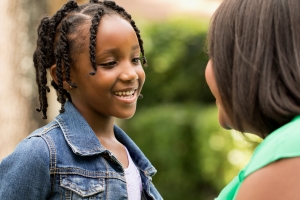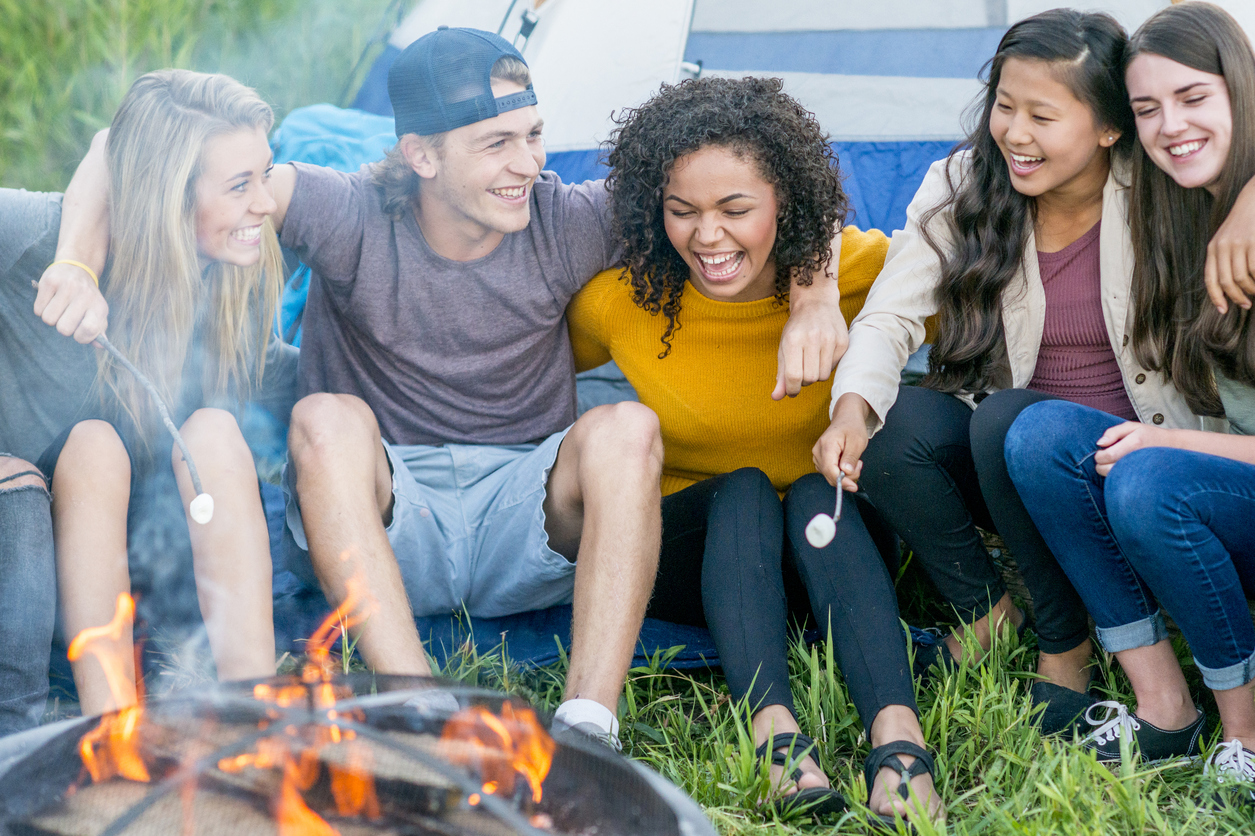
As parents we all want our children to be compasionate toward others. Yet, sometimes kindness is their furthest emotion. The below article I recently found and I think it can help us be beter parents while helping ur children be better people.
How to Be a Kindness Role Model for Your Kids
We can inspire our kids to be kinder by talking about and practicing kindness ourselves.
Today, World Kindness Day, is an opportunity for people across the world to focus on good deeds in their communities, reminding us that kindness is a positive force that connects us all. But how can we make sure that our kids get that message, too? After all, for kindness to become the norm in society, our children will need to learn how to be kind to carry the torch forward for future generations.
It can be hard to show kindness in our daily interactions—for us, as well as for our kids. Even though we arehardwiredfor kindness and empathy, we can be hampered by the busyness in our lives or by more negative influences in the world, like bullying, intolerance, hate crimes, and more.
In our book,The Kindness Advantage: Cultivating Compassionate and Connected Children, we help parents and grandparents uncover their children’s compassionate qualities by introducing ten fundamentals of kindness and sharing practical, concrete suggestions to help you and your child practice kindness in everyday life. By cultivating kindness in our children, we can benefit them as well as their communities.
Why kindness matters
At its essence, kindness means having concern for others and being able to show that concern through our thoughts and actions.Just like for adults, kindness is very important for kids’ social connections and well-being.
One recentstudywith nine to eleven year olds underscored these benefits. The researchers found that children who performed acts of kindness on a regular basis, in addition to seeing positive changes in their academic experience, were more socially accepted by their peers. What’s perhaps more surprising is how their engaging in acts of kindness also ended up benefitting their entire community: These children tended to be more inclusive and less likely to bully others as teenagers.
As many of us have experienced, being kind makes usfeel goodand motivates us to perform more acts of kindness. This feedback loop can have a very powerful impact. The physical feeling that accompanies giving—the “helper’s high” that is fueled by the release of endorphins—improves our children’s physical and emotional health.
So, how might we help our children focus more on kindness? When we role-model kindness—and kindness fundamentals like empathy and generosity—ourselves, kids can see them in action and be inspired to practice them.
We might start by simply asking ourselves, “How do I want to treat other people and how do I want to be treated?” We can observe and notice opportunities for kindness all around us, offer small acts of kindness to others, and talk to our children about what we are doing and why. Here are a few suggestions for how to model the building blocks of kindness and build kindness muscles in your children.
Help kids recognize connections in their lives
Connections with others are important for health andhappiness. Helping our kids develop strong social connections makes it easier for them to find opportunities for kindness in their lives.
Since we know our kids are watching what we do and listening to how we speak, we should model having connections to all kinds of people—those who are similar to as well as different from us. If, consciously or unconsciously, we speak negatively about individuals or communities outside our own social groups, or we keep certain people out of our social groups, our children willlikely beinfluenced by that and be discouraged from exploring relationships with those people themselves.
On the other hand, if we model more inclusivity, our children can learn that connecting with someone—even someone different from us—is about paying attention, listening, watching, and being “there.”
To make these connections more concrete, you can share the answers to the following questions with your children or ask them to answer themselves:
- Name three people you feel a connection with. What makes you feel connected to them? Who has tried to connect with you? What did they do?
- We can feel connected to people and places. Think about a place in your neighborhood that you visit—it could be a park, library, community center, or someplace else. What makes you feel connected to that place?
Or, try these experiential activities with the whole family:
- Invite an older relative over to cook a special recipe for a particular celebration.
- Share holidays with a family who has a different tradition from yours.
Develop children’s empathy skills
It’s important for us to foster empathy skills in our children so that they can learn to care about other people’s viewpoints. The best way to teach your children empathy is for you to model empathy towardsthem. Be open to the range of emotions they express, and don’t try to shut them down. Some feelings may be more comfortable than others—for us and our children. But, if we can normalize our children’s emotions and teach them how to recognize and value their own emotions, they can learn to be more sensitive to others’ feelings.
Although we don’t always know firsthand exactly what someone is feeling or thinking, we can show our kids how important it isto ask questionsand to listen carefully to someone’s answers in order to understand their situation better. This teaches kids that whattheymay need in a situation is not necessarily what another person would need. Being empathic is recognizing that and trying to respond in a way that will be helpful or meaningful to another—something that kids, even from a young age,are capableof doing.
Here are a few suggestions to encourage empathy in you and your child:
- Discuss a time someone knew how either of you were feeling without being told. How do you think they knew? Can you describe what they did or said? How did that make you feel? What are clues you can look for to understand how another person is feeling?
- When you’re watching a movie or TV show with your child, talk about how one of the characters might be feeling and how you would feel in that situation.
- If you’re taking time to talk with a friend about a challenging situation, explain to your child what you’re doing and why. You don’t have to share the details, but do let your child know that you’re listening to your friend and trying to help. Or, if your child talks about a conversation with a friend, highlight ways in which they were showing empathy.
Encourage kids to give to others
When we are connected to others and have empathy for them, we are more likely to give of ourselves. All of us can give something, whether it is our time, talent, expertise, or material goods. By giving to others and teaching our children to do so, we are laying the foundation for their future happiness andhealth.
Talking to our kids about why we give and how it impacts us and othersis vital. Having this conversation over time encourages our kids to continue to give of themselves as they get older.
Here are a few activities and discussion topics to encourage more giving in your kids:
- Think about things you do with your friends and family that you might share with others. For example, if you or your child loves to draw, turn some of the drawings into cards for people who are in the hospital.
- Think of a situation when someone gave you something that made a difference in your life. What was it? Maybe it’s something you could “pay forward.”
- What are two of the best gifts (not material things) that you have ever received?
- Volunteer your time and talk about your experience with your child. Share why you go to this special place and the reason it is important to you.
We are all hardwired for kindness. By practicing these keys to kindness at home, we both model and help our children lay the foundation for meaningful interactions outside of our home.
Each act of kindness makes a difference. Even the smallest gesture of kindness communicates to someone that we respect and value them. Through kindness, we can encourage our children to be a force for good and change in the world. And wouldn’t that be a great way to perpetuate the message of World Kindness Day long into the future?













 Written by
Written by 
 Jonas Sickler,
Jonas Sickler,  Lesley Vos,
Lesley Vos,  Josh Ochs,
Josh Ochs, 
 Daniel Patterson,
Daniel Patterson, 
 As a Camp Director and parent of a teen who is studying this week for his SAT's, I often ask myself if we have missed the boat by sending our child to camp every summer. Not only Swift Nature Camp but other camps "his camps" rather than working on his resume. Below is an article that helped me figure it all out.
As a Camp Director and parent of a teen who is studying this week for his SAT's, I often ask myself if we have missed the boat by sending our child to camp every summer. Not only Swift Nature Camp but other camps "his camps" rather than working on his resume. Below is an article that helped me figure it all out. Camps are fun. But why are they important? In a world gone tech crazy, sometimes the great outdoors is just that: great. Here are 10 reasons why every child should go to camp.
Camps are fun. But why are they important? In a world gone tech crazy, sometimes the great outdoors is just that: great. Here are 10 reasons why every child should go to camp.

